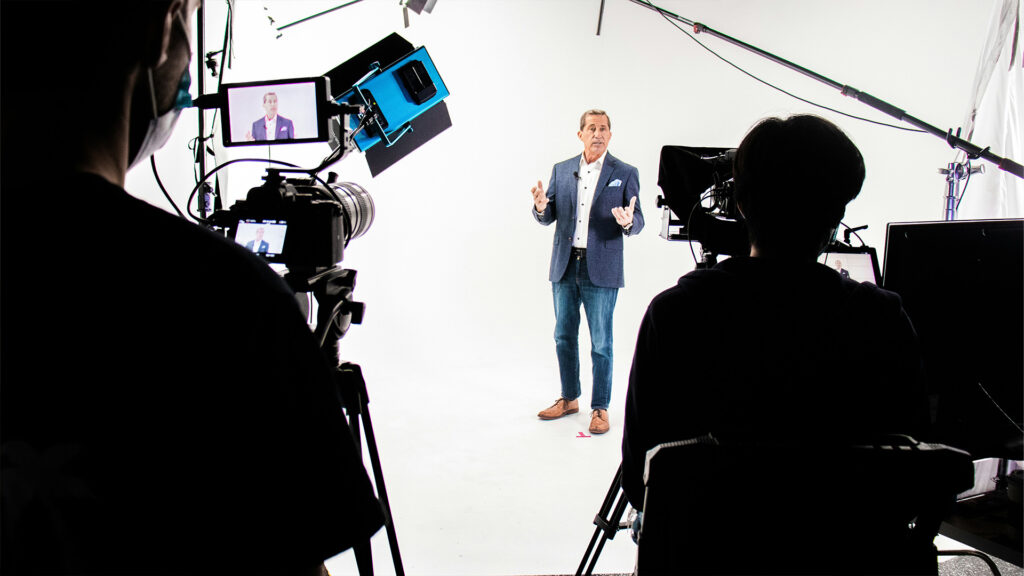Most people have at least heard of the autocue (also known as the teleprompter), but just in case it has passed you by, the autocue is a piece of filmmaking equipment which displays a script in a large, easy-to-read font, which slowly scrolls down a screen.
This is placed around the lens of the camera which allows the presenter to read the script and seamlessly relay it to the audience without the use of memorisation.
With that in mind, you can then see how it quickly became the workhorse of the newsroom, panel shows and basically all of live television.
This is why most people have the image in their head that the autocue is the answer to all of their problems.
Haven’t been in front of a camera before?
An autocue will make you seem professional!
Nervous about memorising your lines?
Don’t learn them, just use an autocue!
While the autocue undoubtedly offers advantages in terms of efficiency and precision, it is an art form that needs to be practiced, and counterintuitively in some cases it can detract from the overall production, rather than enhancing it.
So, what are those cases? Well before we go into that, let’s first talk about the pros of using an autocue.
1. Efficiency and Accuracy:
Actors and presenters can effortlessly read scripts while maintaining eye contact with the camera, minimising the chances of mistakes and retakes. This efficiency can greatly reduce production time and costs, especially good for filming people with only a small opening in their schedule.
2. Professional Presentation:
The use of an autocue can give a polished and professional look to a production, by allowing the opportunity for a more consistent and controlled delivery, and is great for when precise wording is required, common for videos relating to medical matters and other serious topics.
Even professionals can struggle to memorise lines, which may lead to them not being selected for specific projects – the autocue allows these types of people the chance to present/act.
The use of an autocue adds a layer of complexity to a production – they require careful set-up and calibration, including proper positioning, font size, scrolling speed and lighting adjustments which can be a time-consuming set-up.
They also require an additional person on set to operate the text scroll while filming is taking place.
Even though the autocue is seen as a safety net, it can actually detract from the presenter’s performance and confidence, especially for novices.
The reason for this is simple – if an autocue is being used, people are generally less likely to familarise themselves with what they are presenting.
If there is no ‘safety net’ people are more likely to practice and get comfortable with the material (we also suggest people using an autocue do this as well), and this really comes across on camera.
Reading from a script can make actors and presenters appear detached or insincere, lacking the emotion and spontaneity that comes with really knowing what they are presenting.
In other words, it has the potential to make people seem wooden, or robotic, and people will notice, causing them to struggle to connect or trust what they are watching.
So when should the autocue be used?
As discussed in this article, the autocue isn’t ideal for all situations and definitely should not be seen as an alternative to a presenter learning their material.
It is ideal when precise wording is required and the production allows for it with regards to time and budget, but by using it you may end up sacrificing connection with the audience and even confidence in the material, if the presenter is a novice.
Whether using the autocue or not, for the best delivery we always recommend learning your material – memorise it and practice it out loud.
If you wanted to have a chat about anything in this blog or any other elements of video production, contact us today. We love chatting through ideas and we also will happily provide you with free, no obligation quotes.





